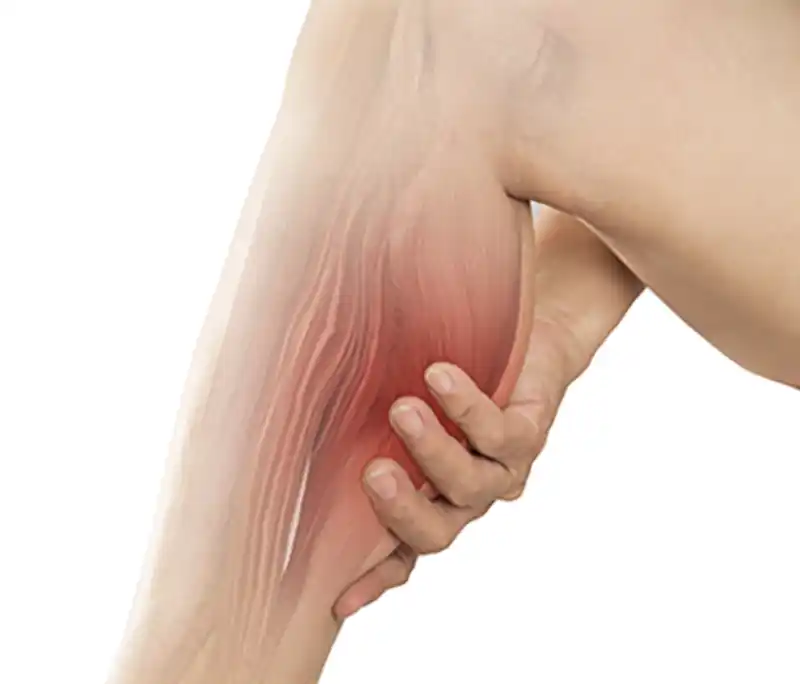Dr. Bryan Sagray is now offering same-day appointments!
Runners and other athletes may experience symptoms of leg and foot numbness and pain which comes on during and after activity. Such symptoms may be frustrating to the athlete as their diagnoses and treatment may be delayed due to the intermittent nature of symptoms. A patient may see their podiatrist but exhibit no signs and symptoms during the office visit.
The muscles that control foot and ankle function originate in the leg and are in compartments. Compartments are essentially “sleeves” of connective tissue or fascia that contain muscle groups along with arteries and nerves. The compartments of the leg are the anterior compartment, lateral compartment, deep posterior compartment and the superficial posterior compartment.
Here are some important terms to know when talking about the ankle:

The anterior compartment includes the muscles that dorsiflex or lift up the foot and toes. It also contains two major nerves and arteries. The lateral compartment contains two muscles that lift up on the outside of the foot, that is, evert the foot as well as a major nerve. The peroneal muscles of the lateral compartment also prevent the ankle from spraining. The superficial posterior compartment includes the large calf muscles that define the back of the leg and allow one to push off. The deep posterior compartment includes muscles that lift up on the arch of the foot or invert the foot and a major artery and nerve that goes to the bottom of the foot.
Overuse of the muscle groups can occur with overtraining or with biomechanical imbalances of the foot and leg. For example, if one has a tight superficial posterior muscle group, then the muscles of the anterior compartment of the leg must work harder to lift the foot, especially on hills or an incline.
Muscles, when overused, may swell while running. The swelling is contained within the compartment resulting in increased compartment pressure. The fascia surrounding the muscles has minimal elasticity or expansibility. The delicate nerves in the compartment are sensitive to pressure leading to pain and numbness.
The sensation chronic compartment syndrome causes generally resolves after cessation of activity but, in some cases, may persist and become severe. If you’re struggling with these symptoms and are ready to find relief with the best ankle and foot doctor San Antonio has to offer, schedule your appointment with Dr. Davis at South Texas Podiatry today.
Symptoms of chronic exertional compartment syndrome generally include the following:
Symptoms of exertional compartment syndrome listed above often follow this pattern:
Treatment of chronic exertional compartment syndrome is generally conservative focusing on changes in training, shoe gear, manual therapy, orthotics and other biomechanical interventions. Surgical treatment may be needed if there is risk of muscle or nerve damage and involves a fasciotomy, cutting the fascia to release pressure or fasciectomy, in which a section of fascia is removed.
If you're experiencing symptoms of unusual pain, weakness, numbness or swelling in the ankle, it’s time to see an ankle specialist like Dr. Davis for a diagnosis. Do not try to exercise through the pain, as that may lead to permanent nerve or muscle damage. Exercise-induced compartment syndrome may mimic the symptoms of shin splints. There is a relationship between the two because shin splints often result from the same type of overuse or problematic biomechanics.
Diagnosis of chronic exertional compartment syndrome can often be accomplished without imaging especially by a podiatrist well-versed in biomechanics. An MRI may be ordered to examine the shape and structure of muscles and rule out stress fracture. Compartment pressure testing is often utilized in acute compartment syndrome but may be considered in chronic exercise induced compartment syndrome. It involves insertion of a needle into the compartment attached to a machine which measure compartmental pressure.
Risk factors for chronic exertional compartment syndrome include:
If you are looking for the best podiatrist in San Antonio, Texas, you’ve come to the right place. Chronic compartment syndrome and other foot and ankle ailments shouldn’t put you on the sidelines. If you or a loved one are in need of a foot doctor, visit our office at 109 Gallery Circle, Suite 119, San Antonio, Texas 78258, or call us at (210) 490-3668 to get more information.